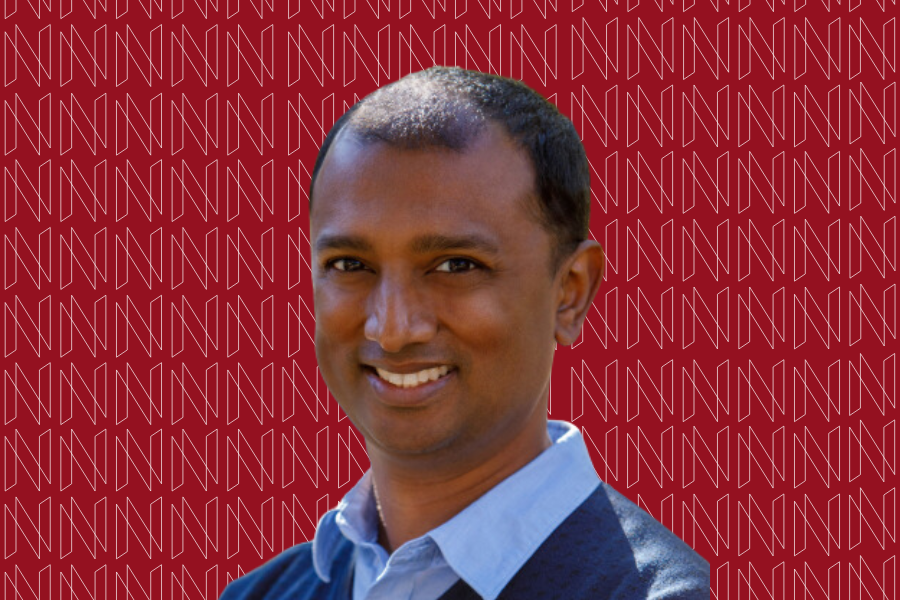
Faculty Spotlight: Professor David Varodayan and the Future of Artificial Intelligence
By Evan Lybrand
Media InquiriesSince 2020, David Varodayan has been an Associate Teaching Professor at the Information Networking Institute (INI) at the Carnegie Mellon University Silicon Valley (CMU-SV) campus. He teaches several courses, from introductory courses in computer systems to the use of Artificial Intelligence (AI) in information security. Varodayan has been heavily involved in the college-wide initiative to build the first-of-its-kind degree program to train future AI engineers, the MS in Artificial Intelligence Engineering (MSAIE). He helped design the curriculum for the INI's MSAIE - Information Security (MSAIE-IS) program, which launched in 2022.
We sat down to talk with Varodayan about his background, insights on teaching and thoughts on the future of AI.
Journey to the INI
Q: Could you tell us a little about your journey?
Varodayan: I grew up in Australia and went to school in Sydney. After that, I went to Canada for my undergraduate at the University of Toronto, where I was in a program called Engineering Science, specializing in electrical engineering.
While at the University of Toronto, I became interested in the mathematical side of electrical engineering in areas like signal processing. Then I went to graduate school at Stanford, and that's how I first came to California, where I live now. I continued my studies in electrical engineering and signal processing focusing on image and video processing in my PhD at Stanford. At the time, I had the good fortune to take various classes in Machine Learning (ML) and Artificial Intelligence (AI), which were my first exposure to those areas.
Q: How did you come to the INI?
Varodayan: I started my university teaching career as a lecturer at the University of Illinois. I was there for seven years, mostly teaching undergraduate classes in the electrical and computer engineering department. Eventually, I had the opportunity to move back to California and I was very fortunate to learn that Carnegie Mellon University (CMU) has a Silicon Valley campus. And, of course, with CMU’s reputation, it was something I wanted to check out. I talked to INI faculty and staff here in Silicon Valley and in Pittsburgh and I realized that the INI is a special organization focused 100% on our students, which turned out to be a perfect fit for me.
Building an AI Curriculum
Q: What is your primary area of expertise?
Varodayan: Here at the INI, my area of expertise is in ML and AI and how it intersects with information security. My courses explore this overlap.
Q: How did you get interested in AI?
Varodayan: I first got into AI and ML about 20 years ago. It was just one of many topics I was exploring in graduate school. One of my classes in ML required an open-ended group project. My partner and I were in the same research group working on image and video technology and we proposed a project applying unsupervised learning to video compression. It turned into a conference paper and some of that work became part of my thesis.
After graduating, I stepped away from ML and AI for a couple of years. However, when I returned to teaching, I started revisiting this area and finding good ways to teach it to students. When I came to the INI, I joined the College of Engineering Master's in AI Engineering Committee and I've been on various iterations of that committee over the last four years. Now, we're entering our third year of running the new MS in Artificial Intelligence Engineering - Information Security (MSAIE-IS) program!
Q: Which courses do you teach?
Varodayan: There are two courses I wanted to highlight: 14-757: Introduction to Machine Learning with Adversaries in Mind and 14-795: AI Applications in Information Security.
14-757 is an introductory class that takes students through classical machine learning techniques, as well as neural networks. We cover a little bit of generative AI near the end of the course too, especially for image generation. Students get a solid grounding in building ML systems in Python and attacking and defending them.
14-795 is project-focused. At the beginning of the course, we survey various AI information security problems and how AI and ML are applied to them. In the latter half of the semester, students work on projects that they propose themselves. This past semester, one group looked at hallucinations in Large Language Models (LLMs) and how to induce models to hallucinate more.
Q: How do these courses intersect with cyberethics?
Varodayan: The intersection of AI and information security brings up all kinds of ethical quandaries. Beyond these courses, I've been playing a key role in developing the MS in AI engineering curriculum, which applies to several programs across the College of Engineering. As we were designing that core curriculum, we realized that it would be critical to have a core class that addresses the ethical question of AI. I'm currently working on such a course tentatively called Trustworthy AI Engineering which will look at AI algorithms at a technical level and see how their design choices can affect society broadly.
Q: How can students use these skills beyond the classroom?
Varodayan: It's going to be our students who take the training they receive in the classroom and go out into industry and identify problems that need to be solved — they're the ones who are going to define what AI, ML and information security means. It's happening already and it's very exciting!
A Passion for Teaching
Q: Why did you decide to teach rather than going into research or industry?
Varodayan: I spent a few years and had great experiences in both research and industry. But, once I got the opportunity to start teaching freshmen and sophomores at the University of Illinois, I realized that teaching at the university level is the most rewarding for me. It was what I wanted to do for the rest of my career.
Q: What do you like most about working with students?
Varodayan: Their enthusiasm is really compelling. Undergrads are coming straight out of high school and their eyes are really open to the world of possibility. Now that I work with Master's students, it's a whole different experience. They're highly motivated to take themselves to the next level and it's increadibly rewarding to see them go out and take ideas covered in class and apply them to new projects.
Q: What advice do you have for students who are interested in pursuing AI?
Varodayan: It's an exciting field; one benefit of that excitement is that there are a lot of tools out there and you can play with them in different ways. You can just have fun generating images or talking to LLMS. The next step is to begin training models or modifying the algorithms. One thing that is helpful is some foundational mathematical skills. Fortunately, a lot of these fundamentals can be very accessible even to high schoolers. So, take classes like probability, statistics and linear algebra if you get a chance.
Looking Towards the Future of AI
Q: When you think about the advancements in the field, what are you most concerned about?
Varodayan: These new technologies are going to be disruptive, and I think there is the potential for these technologies to displace workers. Speaking as an educator, what we should be doing is training people so that they can become empowered, rather than threatend.
Q: What are you most excited about?
Varodayan: Like a lot of people, I'm excited to see what's happening with generative AI. In the education space; I'd like to see applications to personalize learning. Currently, we're not able to scale individual attention or individual mastery learning very well, but there's great potential now with LLMs to scale individualized learning to large groups of students.
